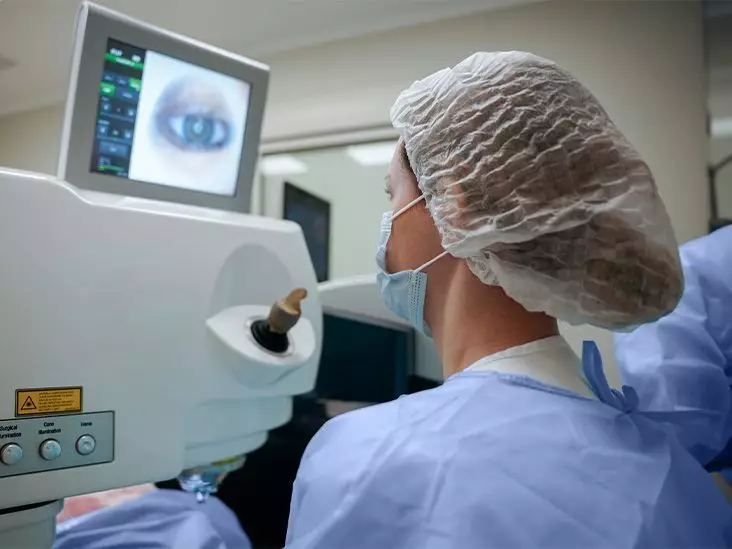Diabetic retinopathy (DR) is a common complication of diabetes that poses significant risks to vision. The Diabetic Retinopathy Severity Scale (DRSS) is an essential tool healthcare professionals use to assess and monitor this condition. In this article, we will explore the intricacies of the DRSS, its medical significance, and ways individuals with diabetes can take proactive measures to protect their vision.
Diabetic retinopathy refers to damage to the retina resulting from complications of diabetes, primarily due to prolonged high blood sugar levels. This condition affects the eye’s delicate blood vessels, causing them to weaken or occlude, jeopardizing visual function. Diabetic retinopathy often progresses without noticeable symptoms initially, making regular eye examinations crucial for early diagnosis.
There are two primary stages of diabetic retinopathy: Non-Proliferative Diabetic Retinopathy (NPDR) and Proliferative Diabetic Retinopathy (PDR). In NPDR, symptoms may be mild or non-existent, but blood vessels begin to swell and may form microaneurysms, which can leak fluid into the retina, leading to vision disturbances. Conversely, PDR represents a more severe form, where new, abnormal blood vessels develop in the retina, increasing the risk of bleeding and subsequent complications such as retinal detachment.
The Diabetic Retinopathy Severity Scale (DRSS), particularly the Early Treatment Diabetic Retinopathy Study (ETDRS) version, provides a methodical approach to quantifying the severity of diabetic retinopathy. This 13-step scale allows healthcare providers to classify the condition based on a patient’s visual acuity and the physical changes observed in the retina during eye examinations.
The ETDRS involves specific assessments where clinicians examine how well a patient can perceive letters of varying sizes on an eye chart. This process is integral since the number of correctly read letters translates to an ETDRS score correlating with the severity of DR. A lower ETDRS score indicates less severity, while a higher score suggests a more advanced stage with increased risks of vision loss.
One of the critical advantages of utilizing the DRSS is its ability to guide clinical decisions. With the structured levels provided by the scale, healthcare providers can tailor treatments based on how advanced the diabetic retinopathy is in each patient. Treatment options may include medications injected directly into the eye—such as anti-vascular endothelial growth factor agents—or laser treatments that target leaking blood vessels, thereby minimizing further damage.
Moreover, the DRSS offers predictive insights into an individual’s risk of vision deterioration over time. By understanding the anticipated progression of their condition, patients and healthcare professionals can collaboratively formulate a proactive plan to manage diabetes and mitigate potential complications of DR.
While the DRSS is vital for assessing the severity of diabetic retinopathy, individuals with diabetes themselves hold the power to reduce their risk by adhering to several key preventative measures. Annual comprehensive eye exams are imperative, ensuring that any emerging issues are caught early, allowing for timely interventions.
In addition to routine eye examinations, a well-rounded approach to diabetes management can substantially decrease the risk of developing or worsening diabetic retinopathy. This involves maintaining blood glucose levels within suggested ranges. Regular physical activity, dietary modifications, adherence to prescribed medications, and regular monitoring of blood pressure and cholesterol can collectively support optimal eye health.
It is also essential for individuals to remain vigilant about their ocular health, watching for any changes in vision, which should quickly prompt a visit to a healthcare professional.
The Diabetic Retinopathy Severity Scale (DRSS) is a crucial instrument in the early detection, monitoring, and management of diabetic retinopathy. Understanding its application helps in recognizing the severity of the condition, thus enabling healthcare professionals to make informed decisions regarding treatment options. However, most importantly, individuals with diabetes must engage actively in their health maintenance by adopting healthy lifestyle practices and committing to regular eye check-ups.
Through awareness, proactive management, and timely interventions, it is possible to preserve vision and enhance quality of life for those affected by diabetes. By understanding the intricacies of the DRSS and remaining vigilant, patients will empower themselves in the fight against diabetic retinopathy.

